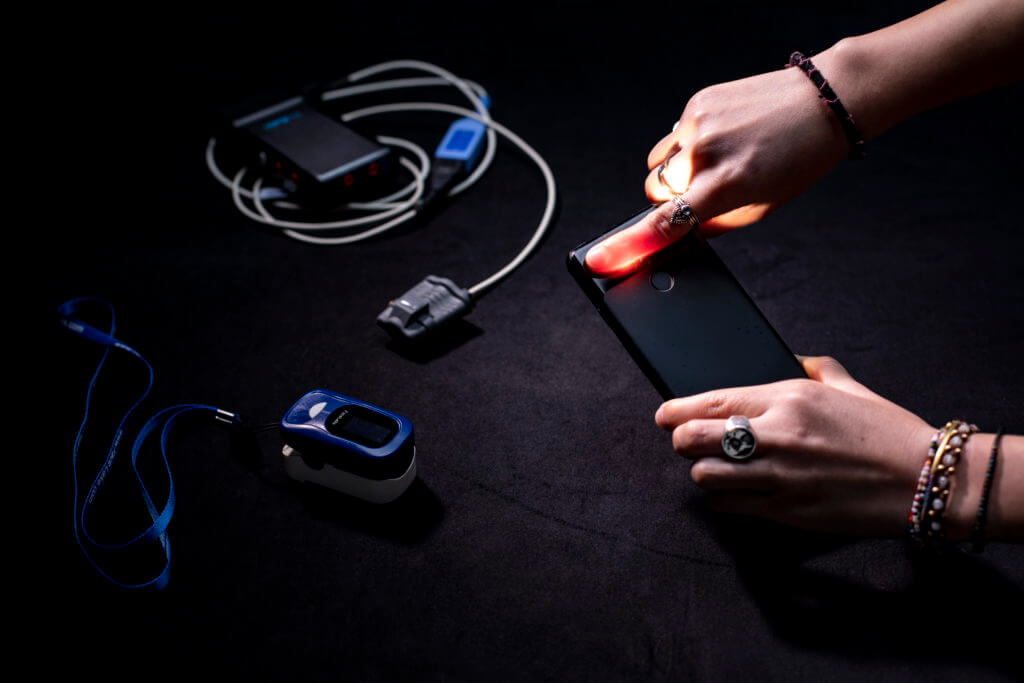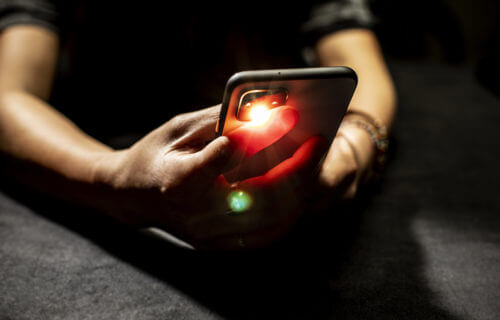SEATTLE — A smartphone’s camera could soon help measure the amount of oxygen in your blood, according to new research.
Researchers from the University of Washington say the technology involves placing a finger over the camera and flash. Artificial intelligence (AI) deciphers levels from flow patterns in the resulting video.
The technique could spot early signs of dangerous drops in oxygen levels among COVID patients and predict asthma attacks before they occur. Our bodies need 95 percent “oxygen saturation.” Respiratory diseases can cause this to drop below 90 percent, leading to the need for inhalation tubes or oxygen masks.
The study finds the device was accurate 80 percent of the time when researchers used a chemical cocktail to bring quantities down in young volunteers.
“Other smartphone apps that do this were developed by asking people to hold their breath. But people get very uncomfortable and have to breathe after a minute or so, and that’s before their blood-oxygen levels have gone down far enough to represent the full range of clinically relevant data,” says co-lead author Jason Hoffman, a UW doctoral student in the Paul G. Allen School of Computer Science & Engineering, in a media release.
“With our test, we’re able to gather 15 minutes of data from each subject. Our data shows that smartphones could work well right in the critical threshold range.”
‘Information could be seamlessly transmitted to a doctor’s office’
When we breath in our lungs fill with oxygen. It’s transported to other organs by red blood cells — providing an indication of fitness and heart health.
Viruses and allergies impair oxygen absorption. In a clinic, monitors called pulse oximeters — clips placed over a fingertip or ear — help measure this.
A smartphone would be much more effective, as “almost everyone has one,” according to the team in Seattle.

“This way you could have multiple measurements with your own device at either no cost or low cost,” says co-author Dr. Matthew Thompson, professor of family medicine in the UW School of Medicine.
“In an ideal world, this information could be seamlessly transmitted to a doctor’s office. This would be really beneficial for telemedicine appointments or for triage nurses to be able to quickly determine whether patients need to go to the emergency department or if they can continue to rest at home and make an appointment with their primary care provider later.”
People could keep an eye on COVID symptoms, for example, “multiple times a day,” the researchers explain.
Complex readings in the palm of your hand
The study found smartphones are capable of detecting oxygen levels down to 70 percent, the lowest value pulse oximeters should be able to measure. The team trained a computer neural network, or deep learning algorithm, to measure oxygen levels among six participants between 20 to 34 years-old.
They used a smartphone while wearing a standard pulse oximeter on one finger at the same time.
“The camera is recording a video: Every time your heart beats, fresh blood flows through the part illuminated by the flash,” explains senior author Edward Wang.
“The camera records how much that blood absorbs the light from the flash in each of the three color channels it measures: red, green and blue,” adds Wang, who also directs the UC San Diego DigiHealth Lab. “Then we can feed those intensity measurements into our deep-learning model.”
Each person breathed in a controlled mixture, which included nitrogen, to slowly reduce oxygen.
The process took about 15 minutes. Study authors acquired more than 10,000 readings, all between 61 and 100 percent. The algorithm now needs testing on more people.
“One of our subjects had thick calluses on their fingers, which made it harder for our algorithm to accurately determine their blood oxygen levels,” Hoffman says.
“If we were to expand this study to more subjects, we would likely see more people with calluses and more people with different skin tones. Then we could potentially have an algorithm with enough complexity to be able to better model all these differences.”
The study, published in the journal npj Digital Medicine, is a good first step toward developing biomedical devices that work with machine learning to produce better results.
“It’s so important to do a study like this,” Wang concludes.
“Traditional medical devices go through rigorous testing. But computer science research is still just starting to dig its teeth into using machine learning for biomedical device development and we’re all still learning. By forcing ourselves to be rigorous, we’re forcing ourselves to learn how to do things right.”
South West News Service writer Mark Waghorn contributed to this report.
